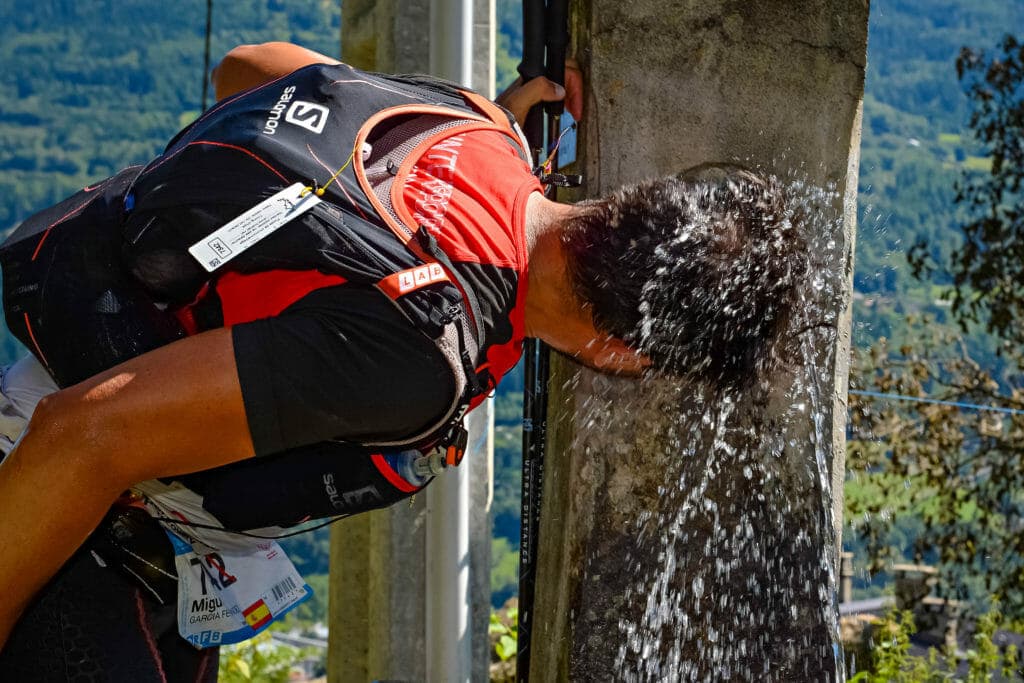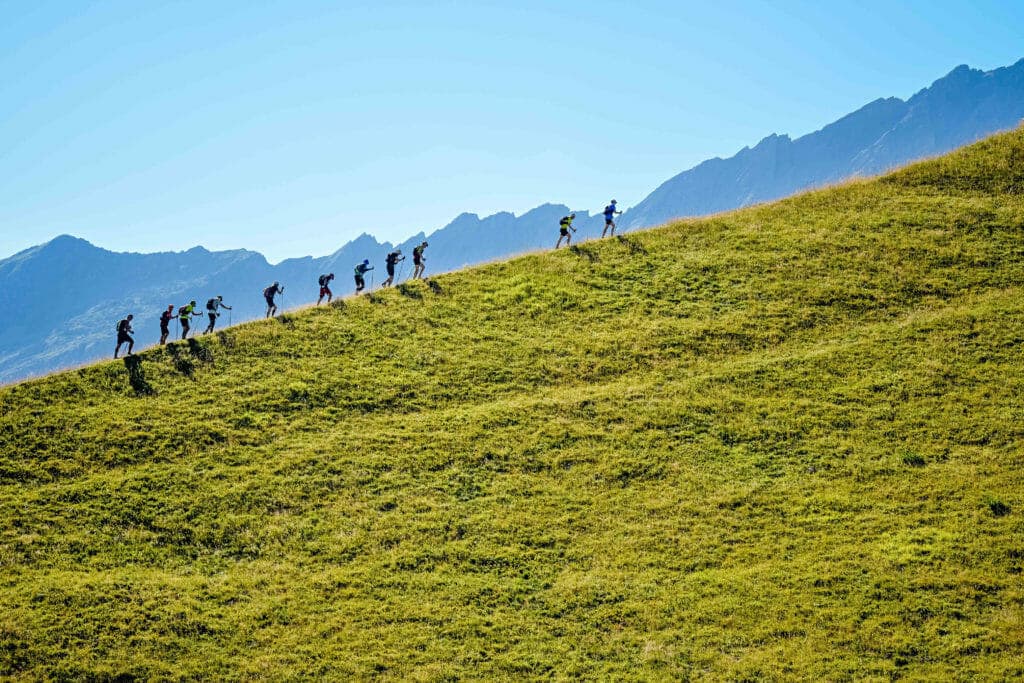
TDS: Running through the Mountains to Chamonix
“I watched the sky a long time, concluding that such beauty was reserved for distant, dangerous places, and that nature has good reason for exacting her own special sacrifices from those determined to witness them.”—Admiral Richard Byrd, Alone.
The sound is unmistakable. Someone… something…. is breathing. And whatever it is, is very close to me. Too sluggish to freeze my steady forward motion, I turn my head to the side as I roll past, and my headlamp illuminates about 1,200 pounds of dozing bovine. I am not the least bit fazed.
After 20 hours of trail running UTMB’s TDS race, nothing much surprised me anymore. The list of curious and confounding had grown by the hour. I saw the carnage of one of the summer’s hottest days, as the sun beat down on the 2,000-meter climb from Bourg St. Maurice to Passeur de Pralognan. Done for the day if not longer, runners abandoned the race by the dozens, grabbing what islands of shade they could find. Later, I was told to stow my trail running poles and cling to a cable for security, descending the airy exposure of Pralognan. And, in the sweltering heat of midday, I was sprayed with a hose by a five-year old in St-Germaine village. We both jumped for joy, letting go with carefree laughs.
This year, the 119-km TDS (“Sur les Traces des Ducs de Savoie” or “In the Footsteps of the Dukes of the Savoie” ) will be remembered for the searing heat of the day. In Bourg St Maurice, temperatures headed well into the 90s. A record 41 percent of the field dropped or were unable to complete the course in the required 33 hours. Those runners vigilant enough to constantly rehydrate and keep their core temperatures cool were the ones who dodged the lines at the aid station tables with the “Abandon” sign, and a disconsolate bus ride back to Chamonix.

(TDS© UTMB® – photo: Pascal Tournaire.)
TDS is arguably the least-known of the Ultra Trail du Mont-Blanc series of races. For those who dig into the jumble of acronyms that comprise the world’s most famous series of races (UTMB, CCC, PTL, OCC or TDS, anyone?) TDS emerges as something quite different from the other races.
To start, there’s the course. It’s wild, passing through miles of remote, high alp country. Hours pass, and aid stations appear oasis-like amid the peaks of France’s Haute-Savoie region. And, TDS is technical. Done with more than a vertical mile of climbing to Passeur de Pralognan? Well, take a breath and pay attention, because you’re about to dive off the other side. A misstep will buy you a helicopter trip.
Then, there is the relative peacefulness of TDS. Press photos of the UTMB races often feature bell-ringing villagers, wildly welcoming runners to their part of the course. Well, TDS trades those moments for quieter, more rugged scenes that are equally memorable. The smell of wood smoke as you quietly run past a shepherd’s dwindling camp fire. The occasional ring of a cow bell, the result of an early morning repositioning from someone in the herd. Or, the dozens of glowing lamps from those of us leaving La Gitte climbing towards Col Joly. Only later did I realize that those upper few points of light were stars. On the TDS course, in the middle of a long alp night, it’s easy to comingle earth and sky.

TDS may be shorter than UTMB, but is not for the faint of heart. It is a notoriously tough course. Friends in Chamonix speak about it with a certain reverence and seriousness. Two responses emerged. “I tried that once,” as if the door was closed on any future attempt– and “I did TDS…” followed by long silence, as the speaker tries to grapple with the words to describe it all.
Finally, TDS feels more manageable. The 2016 course was shared by just 1,792 starters—a relatively small number, in the UTMB racing scheme. By mid-morning, you will find yourself running with just a few compatriots. As the hours pass into double digits and beyond, you just might find yourself alone in the calm alp evening, running past, well, who knows what. It’ll be just you, the sound of your shoes pounding dirt and rock, and the occasional company of a dozing cow.

For more information: